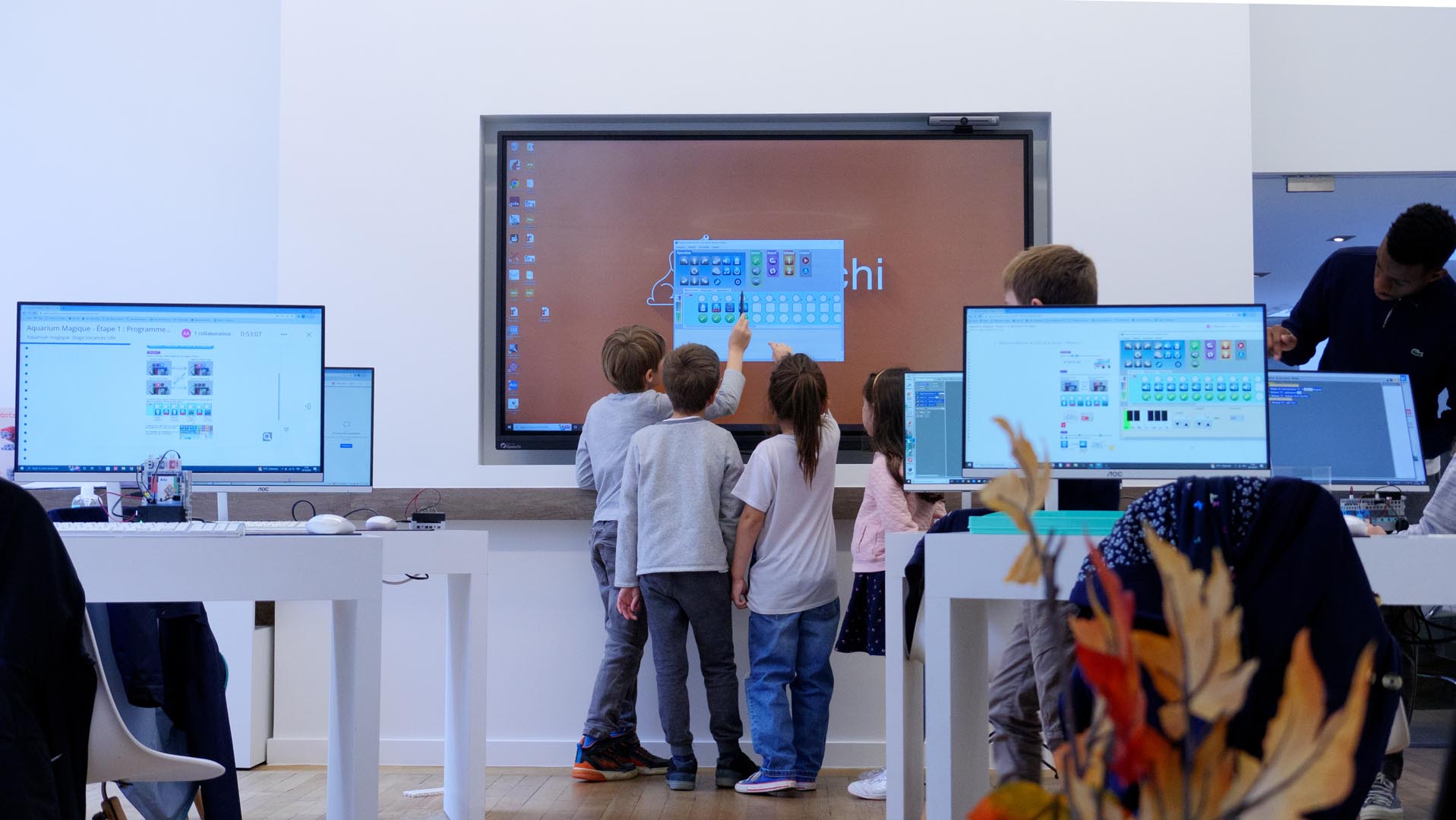While digital technology has become a firm staple in many educational institutions across the globe, some organisations may be hesitant when it comes to adopting it.
This could be for a variety of reasons, from budgetary constraints and doubt regarding its effectiveness to a lack of knowledge on the technology available on the market.
At Speechi, our goal is to make digital technology as accessible as possible to schools, and part of this involves shedding light on its benefits through practical examples.
Educational technology, also known as EdTech, is the adoption of software, hardware and equipment that has been specially designed to aid teaching. Below we will list a few examples of this game-changing technology, and explain why it is beneficial in the classroom.
Digital whiteboards, visualisers and smart whiteboard software

Digital whiteboards are an incredibly popular choice in teaching institutions, because they categorically improve engagement from pupils and students.
Like a traditional whiteboard, the screen can be used as a surface for drawing or writing. However, unlike its non-digital counterpart, an interactive whiteboard offers virtually infinite space for brainstorming, displays informative videos in stunning HD resolution, and can be used to pull up versatile teaching resources in just a few swipes.
Best of all, students can interact with it – either at the front of the classroom, or from a connected device.
This turns learning into a fun process, and with gamification (which we will elaborate on later), it incentivises them to retain information.
When combined with smart whiteboards, online educational software also offers a much higher degree of flexibility for both teachers and students alike.
With these technologies combined, educators can supplement their teaching materials with a wide range of free and paid online teaching resources. With access to programs and applications like this, students can also load up a range of materials, and learn in a way that suits their own style.
To the relief of many teachers, they will also save precious time preparing presentations – which means more time focusing on the students themselves.
One commonly overlooked benefit of this technology is that it fosters inclusivity. For students with physical disabilities, the use of traditional teaching equipment often inadvertently excludes these children. For example, it would be much more difficult for a pupil in a wheelchair to come to the front of the class and contribute to a groupwork task.
With a smart device (like a laptop or tablet) connected to the interactive whiteboard, students across the class can participate without having to crowd around the front of the classroom.

Last but not least, it is almost impossible to discuss the benefits of technology in the classroom without mentioning gamification.
Gamification is the practice of applying game theory to teaching and learning processes – which instantly provides a solid incentive for children to learn. For example, while many students dread the pressure of taking tests, it can be much easier to benchmark their levels of knowledge using quizzes, questionnaires and fun activities.
This learning method is especially effective for teaching young pupils the fundamentals of drawing and counting, with free whiteboard games from providers like Twinkl.
When students look forward to their classes, they will retain knowledge much more effectively.
Not sure where to start?

With so many EdTech options available in the classroom, it can be tricky to know what devices and services would be best for your school and pupils.
This is why Speechi’s expert teams are on-hand to provide valuable advice, recommendations, and pricing quotes – so you can find out exactly what setup will work best for your use-case. Contact our teams today, or visit our showrooms in Paris and Lille to explore our products in-person.





